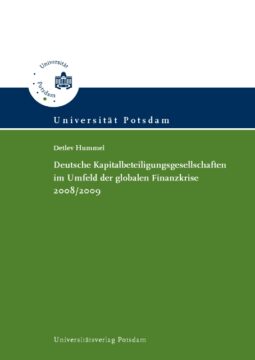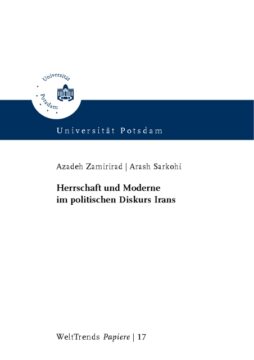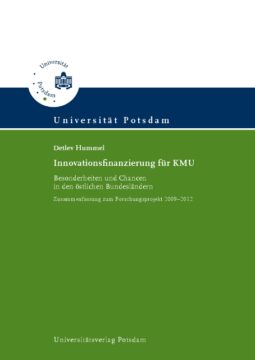The impact of education becomes politically and for the society more important. In research area the higher relevance is indicated by a distinctive discussion about, for example, the influence from education to earnings. This thesis shows national and regional disparities with respect to the monetary appreciation to general human capital. Therefore different econometric methods are discussed and based on that, intervals for the returns to education are estimated. The first chapter presents the theoretical fundament using two different models, which are critically discussed in the text. Afterwards the existing empirical literature is shown. The main part starts with a description of the dataset and a discussion about its representativeness. A closer examination to the variables follows using descriptive statistics and verbal explanations. The estimation part starts with a discussion about common methods to measure returns to education. Looking at employees exclusively, 3SLS gives best performance. However, by extension the analysis to the overall manpower Heckman-method is best. The national analysis confirms the results from the existing literature. Within the next step the dataset is separated to have a closer look at different cohorts, full- and part-time worker, as well as public- and private-sector worker. Comparing these groups with each other the estimated returns to education are not statistically different. However, results change by estimating regional returns to education for Germany. First the dataset is splitted into two regions, the eastern- and the western-region. Comparing the estimated 95 %-confidence intervals, differences are significant between both regions in Germany. Hence, it is worth to intensify the regional analysis. The next step is a further separation of the dataset to a federal-state-analysis. Again, the comparisons of the resulting confidence intervals show partially no overlapping confidence intervals. Separating the dataset gives no possibility to compare the coefficients with statistic tests. Because of that a new regression model without the necessity of separation is introduced. For this purpose the variation of the regions are included by interaction terms. This model can be estimated using OLS- and Heckman-method. The advantage of this procedure is that the schooling-coefficients can be tested on statistical equality. Irrespective which method is used, differences in the return to education can be estimated for Mecklenburg-West Pomerania especially and for Saxony-Anhalt and Thuringia. These three states tend to a higher monetary return to general human capital compared to the other federal states. Thereafter a discussion follows about possible causes for the estimated regional heterogeneous returns to education. It is shown that federal states with a high return to education lean towards a lower middle level of income and a lower price level on average. In addition to that, there is a relation between a higher relative deviation from average income and higher returns to education. Looking at migration movements between federal states, it is shown that there are differences in the qualification levels. Moreover, regions with a higher unemployment rate tend to result in higher returns as well. The summarizing conclusion appreciates the scientific findings. For that it has to be said, that this work gives a start for an analysis which should have a closer look to different parts of Germany. It gives an incentive to pursue with, for example, an analysis for more than one year.
eine nationale und regionale Analyse
ISBN: 978-3-86956-219-3
268 pages
Release year 2013
Series: Potsdamer Schriften zur Raumwirtschaft , 5
16,50 €
Non-taxable transaction according to § 1 (1) UStG/VAT Act in combination with § 2 (3) UStG/VAT Act a. F. Providing this service, the University of Potsdam does not constitute a Betrieb gewerblicher Art/Commercial Institution according to § 1 (1) No. 6 or § 4 KStG/Corporate Tax Act. If the legal characterization of our business is changed to a commercial institution subsequently, we reserve the right to invoice VAT additionally. zzgl. Versandkosten
The impact of education becomes politically and for the society more important. In research area the higher relevance is indicated by a distinctive discussion about, for example, the influence from education to earnings. This thesis shows national and regional disparities with respect to the monetary appreciation to general human capital. Therefore different econometric methods are discussed and based on that, intervals for the returns to education are estimated. The first chapter presents the theoretical fundament using two different models, which are critically discussed in the text. Afterwards the existing empirical literature is shown. The main part starts with a description of the dataset and a discussion about its representativeness. A closer examination to the variables follows using descriptive statistics and verbal explanations. The estimation part starts with a discussion about common methods to measure returns to education. Looking at employees exclusively, 3SLS gives best performance. However, by extension the analysis to the overall manpower Heckman-method is best. The national analysis confirms the results from the existing literature. Within the next step the dataset is separated to have a closer look at different cohorts, full- and part-time worker, as well as public- and private-sector worker. Comparing these groups with each other the estimated returns to education are not statistically different. However, results change by estimating regional returns to education for Germany. First the dataset is splitted into two regions, the eastern- and the western-region. Comparing the estimated 95 %-confidence intervals, differences are significant between both regions in Germany. Hence, it is worth to intensify the regional analysis. The next step is a further separation of the dataset to a federal-state-analysis. Again, the comparisons of the resulting confidence intervals show partially no overlapping confidence intervals. Separating the dataset gives no possibility to compare the coefficients with statistic tests. Because of that a new regression model without the necessity of separation is introduced. For this purpose the variation of the regions are included by interaction terms. This model can be estimated using OLS- and Heckman-method. The advantage of this procedure is that the schooling-coefficients can be tested on statistical equality. Irrespective which method is used, differences in the return to education can be estimated for Mecklenburg-West Pomerania especially and for Saxony-Anhalt and Thuringia. These three states tend to a higher monetary return to general human capital compared to the other federal states. Thereafter a discussion follows about possible causes for the estimated regional heterogeneous returns to education. It is shown that federal states with a high return to education lean towards a lower middle level of income and a lower price level on average. In addition to that, there is a relation between a higher relative deviation from average income and higher returns to education. Looking at migration movements between federal states, it is shown that there are differences in the qualification levels. Moreover, regions with a higher unemployment rate tend to result in higher returns as well. The summarizing conclusion appreciates the scientific findings. For that it has to be said, that this work gives a start for an analysis which should have a closer look to different parts of Germany. It gives an incentive to pursue with, for example, an analysis for more than one year.
Recommended Books
-
 2011
2011Deutsche Kapitalbeteiligungsgesellschaften im Umfeld der globalen Finanzkrise 2008/2009
10,00 €Non-taxable transaction according to § 1 (1) UStG/VAT Act in combination with § 2 (3) UStG/VAT Act a. F. Providing this service, the University of Potsdam does not constitute a Betrieb gewerblicher Art/Commercial Institution according to § 1 (1) No. 6 or § 4 KStG/Corporate Tax Act. If the legal characterization of our business is changed to a commercial institution subsequently, we reserve the right to invoice VAT additionally.
zzgl. Versandkosten
Add to cart -
 2011
2011Arash Sarkohi, Azadeh Zamirirad
Herrschaft und Moderne im politischen Diskurs Irans
8,00 €Non-taxable transaction according to § 1 (1) UStG/VAT Act in combination with § 2 (3) UStG/VAT Act a. F. Providing this service, the University of Potsdam does not constitute a Betrieb gewerblicher Art/Commercial Institution according to § 1 (1) No. 6 or § 4 KStG/Corporate Tax Act. If the legal characterization of our business is changed to a commercial institution subsequently, we reserve the right to invoice VAT additionally.
zzgl. Versandkosten
Add to cart -
 2011
2011Asymmetrien in der Neuen Ökonomischen Geographie
15,00 €Non-taxable transaction according to § 1 (1) UStG/VAT Act in combination with § 2 (3) UStG/VAT Act a. F. Providing this service, the University of Potsdam does not constitute a Betrieb gewerblicher Art/Commercial Institution according to § 1 (1) No. 6 or § 4 KStG/Corporate Tax Act. If the legal characterization of our business is changed to a commercial institution subsequently, we reserve the right to invoice VAT additionally.
zzgl. Versandkosten
Add to cart -
 2013
2013Innovationsfinanzierung für KMU
7,50 €Non-taxable transaction according to § 1 (1) UStG/VAT Act in combination with § 2 (3) UStG/VAT Act a. F. Providing this service, the University of Potsdam does not constitute a Betrieb gewerblicher Art/Commercial Institution according to § 1 (1) No. 6 or § 4 KStG/Corporate Tax Act. If the legal characterization of our business is changed to a commercial institution subsequently, we reserve the right to invoice VAT additionally.
zzgl. Versandkosten
Add to cart
Publisher Info
Contact
Potsdam University Library
University Press
Am Neuen Palais 10
14476 Potsdam
Germany
verlag@uni-potsdam.de
0331 977-2094
0331 977-2292





